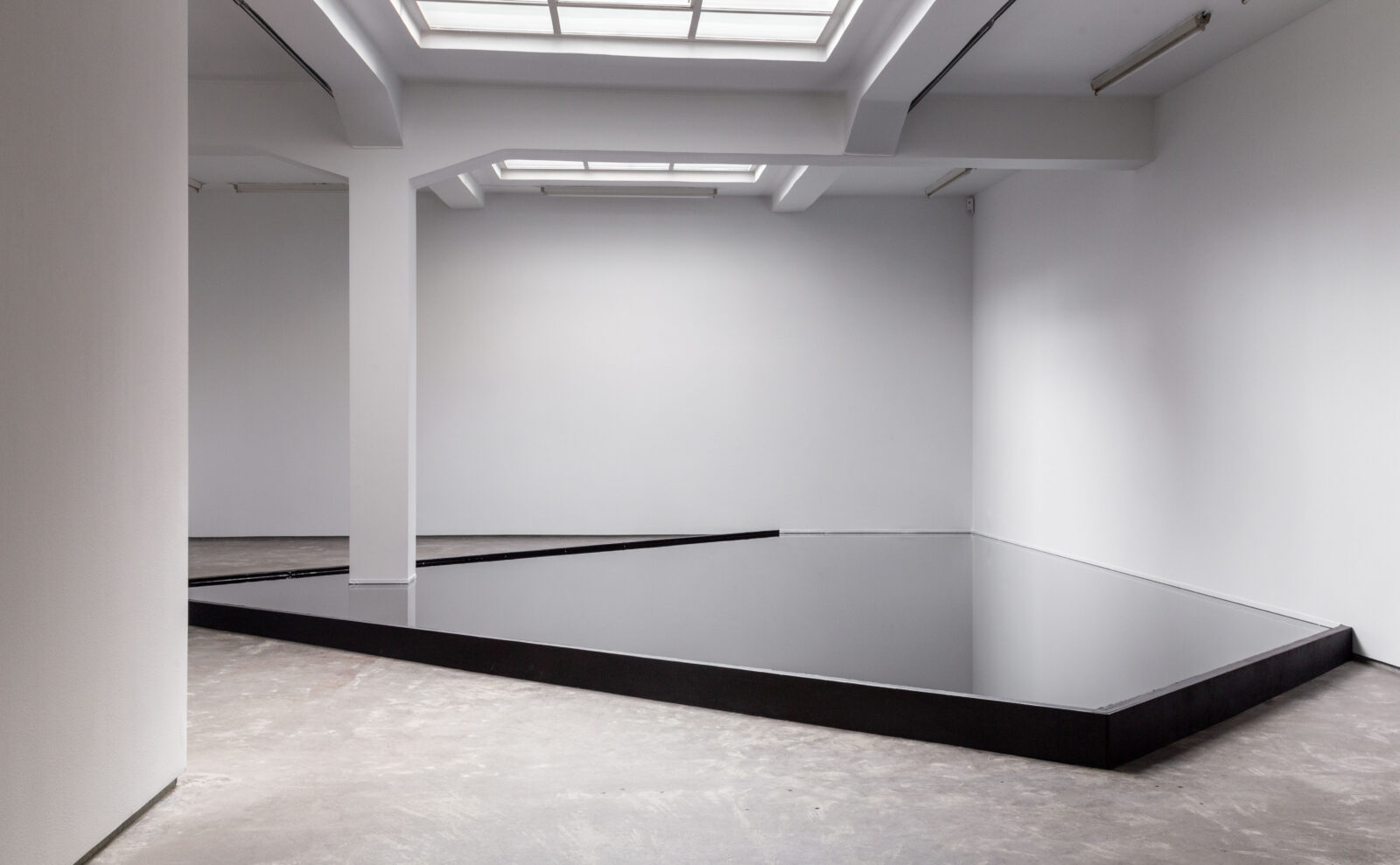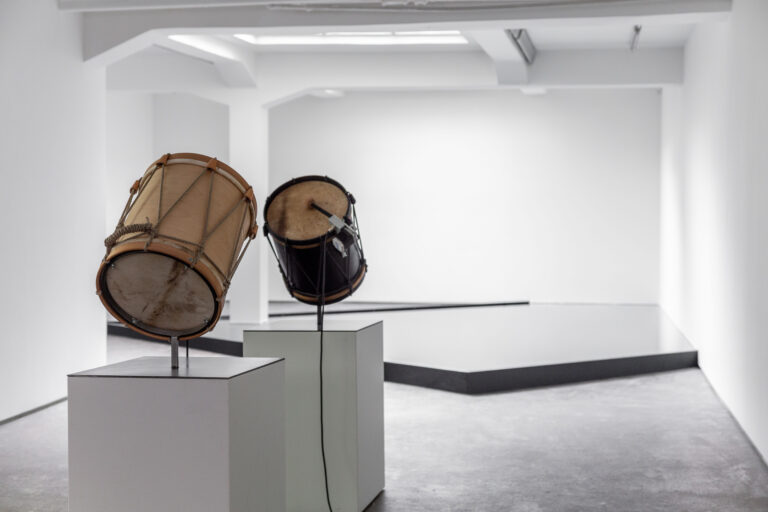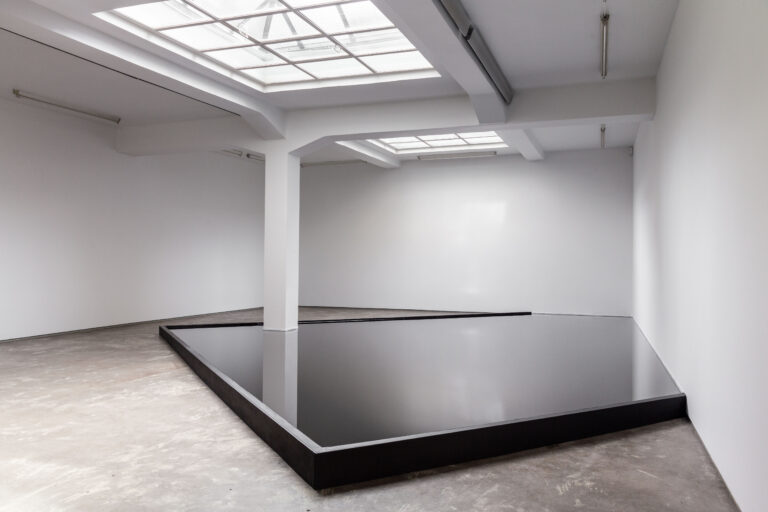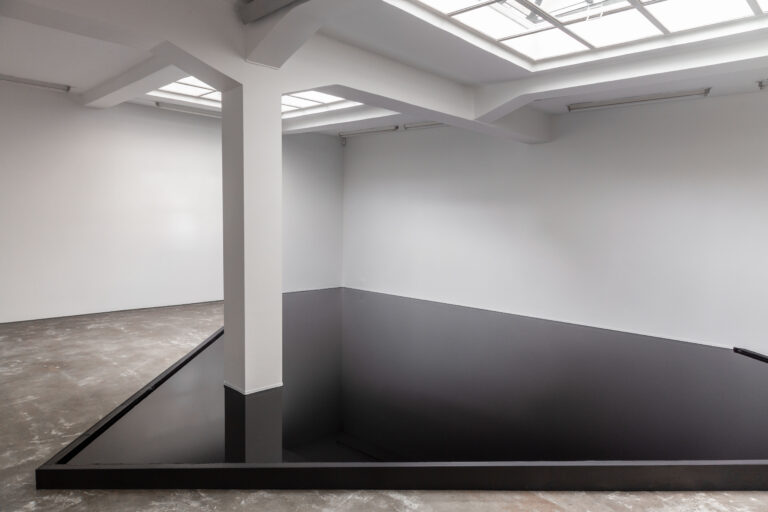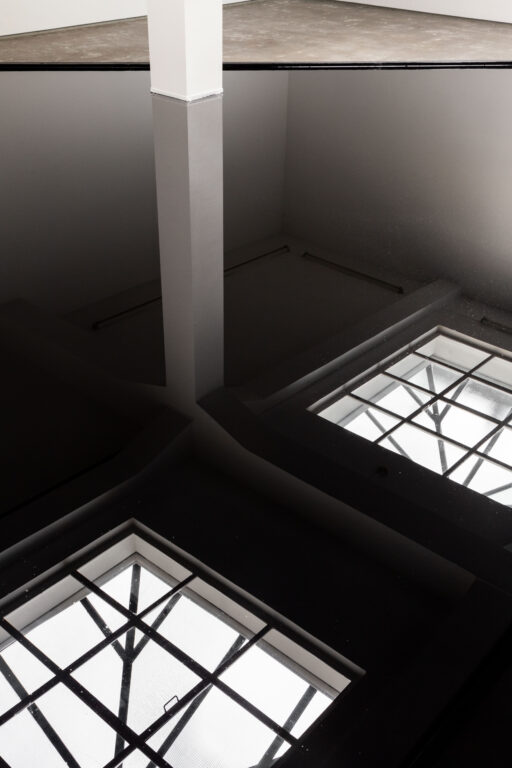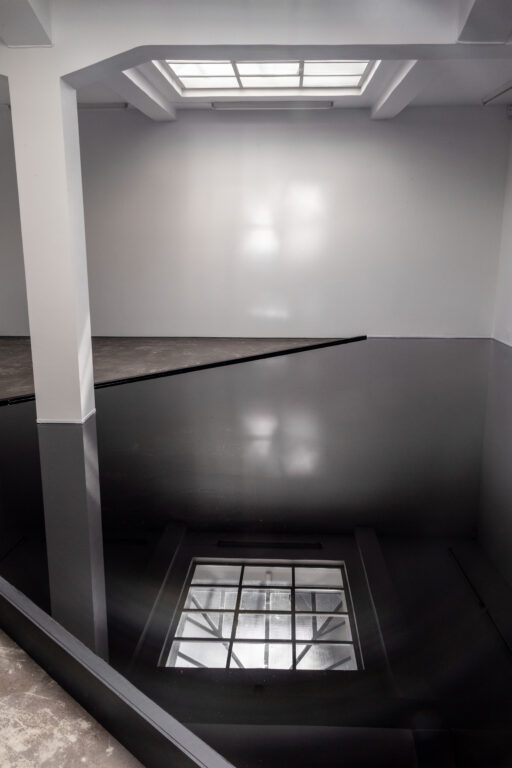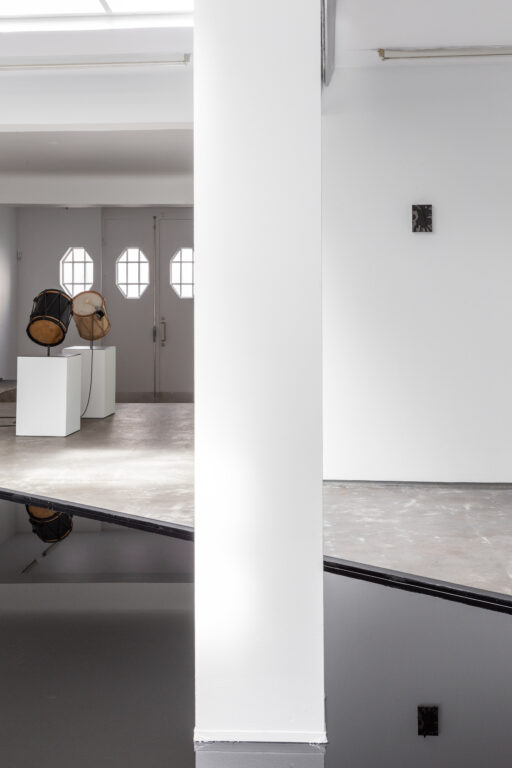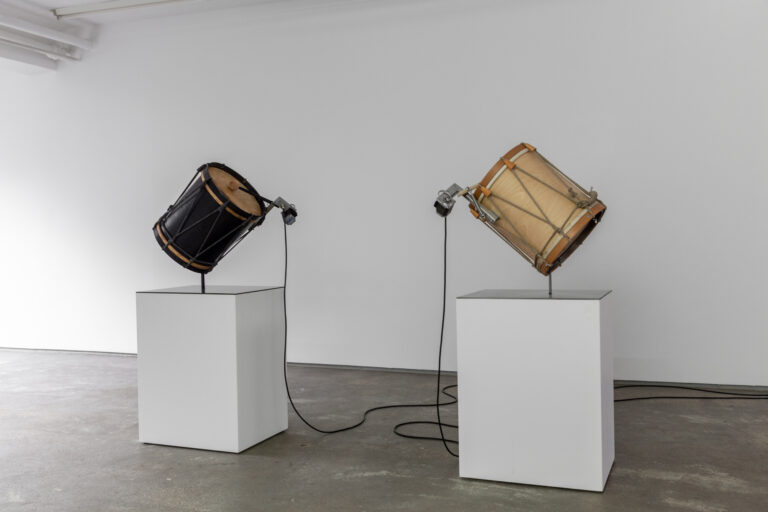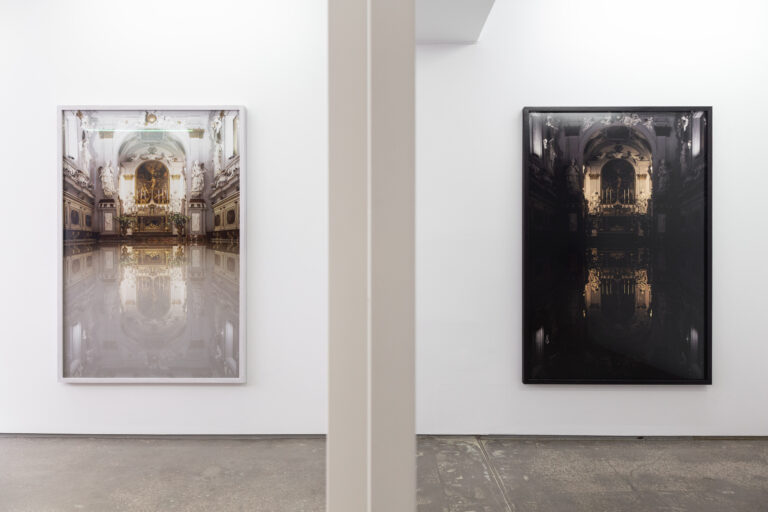Opening 02.06.2022, 18:00 - 20:00
Per Barclay’s symbolic and metaphor-laden sculptures and photographs urge us to think in terms of polarities. Black and white materials, as well as material effects such as transparency and reflections in glass and liquids (including oil, milk, and blood), are used as devices to create visual contrast. Barclay’s artistic practise is extremely ambiguous, in terms of materials as well as the arrangement of photos and objects, which also forms the basis of the artist’s latest work.
This exhibition at OSL contemporary is Barclay’s third with the gallery and the first to display one of the artist’s characteristic oil installations. A shallow, asymmetrical pool filled with black motor oil stretches across the floor from the longest wall of the gallery. One corner of the pool is angled against the opposite wall creating a ‘passage' that forces the audience to move in towards the wall. In contrast to the many variations of Barclay’s photographed “oil rooms” where the floor surface in the different architectonic rooms—from industrial halls to baroque churches—are covered in oil for a few hours while shooting, the installation creates a physical and almost existential presence. The black oil’s shimmering surface dominates the room. The oil mirrors the architecture, the skylight, and the audience, while at the same time presenting a physical risk.
Oil is a dual and Janus-faced material. It has acted as a basis for globalisation, development and welfare in modern economy (especially given the history of Norway’s prosperity). At the same time, it has been responsible for war and suffering for nations and individuals, as well as being the leading contributor to environmental destruction and climate change. In Barclay’s interpretation, the oil becomes both beautiful and threatening, with a symbolic and poetic content—that civilisation as we know it might now be about to ‘receive its last oil’, in literal and perhaps also biblical terms. The contrasts between the life and death-producing forces are further accentuated in the exhibition’s two photographs where the oil has been substituted for milk. The white reflection of the beautiful church interior in the latter almost comes across as a message of hope and salvation, whether you chose to read the message in a religious or secular way. These types of double meanings are emphasised by the work that the viewers encounter first in the gallery: two typical Napoleonic era drums, one dark and one light, that emit a call to arms from their separate pedestals—one as a threat and one as an appeal to defend all that we hold dear.
